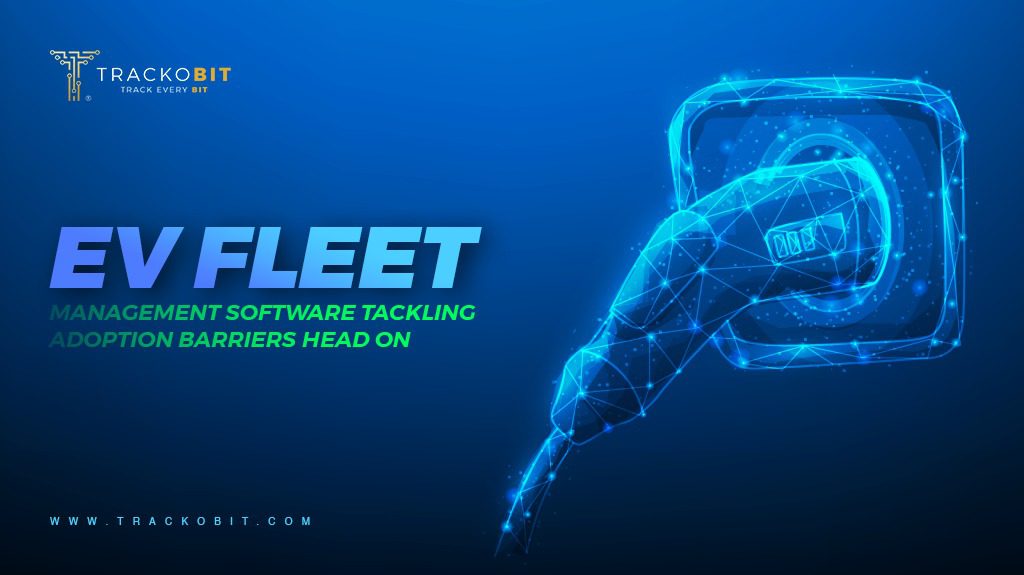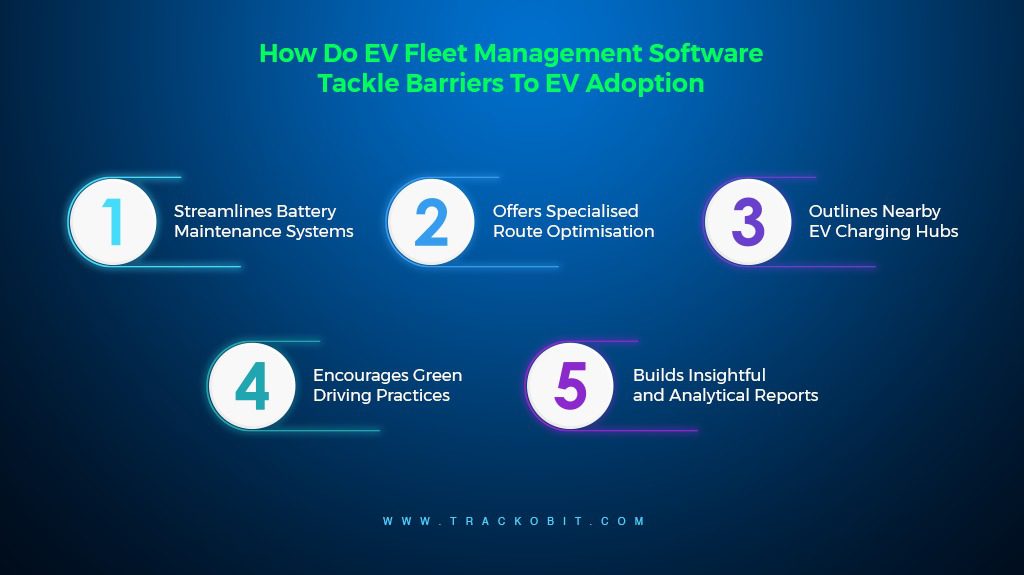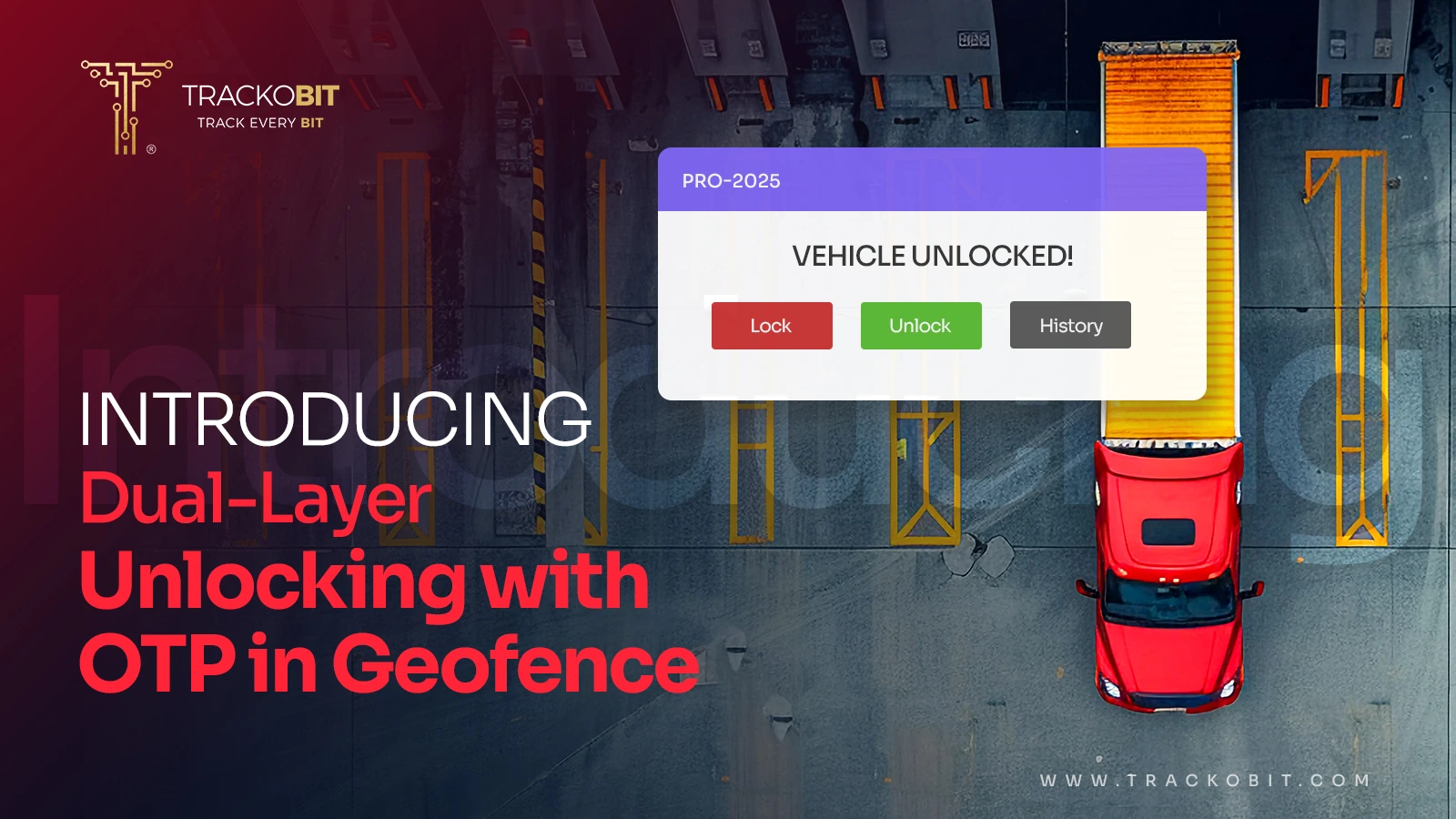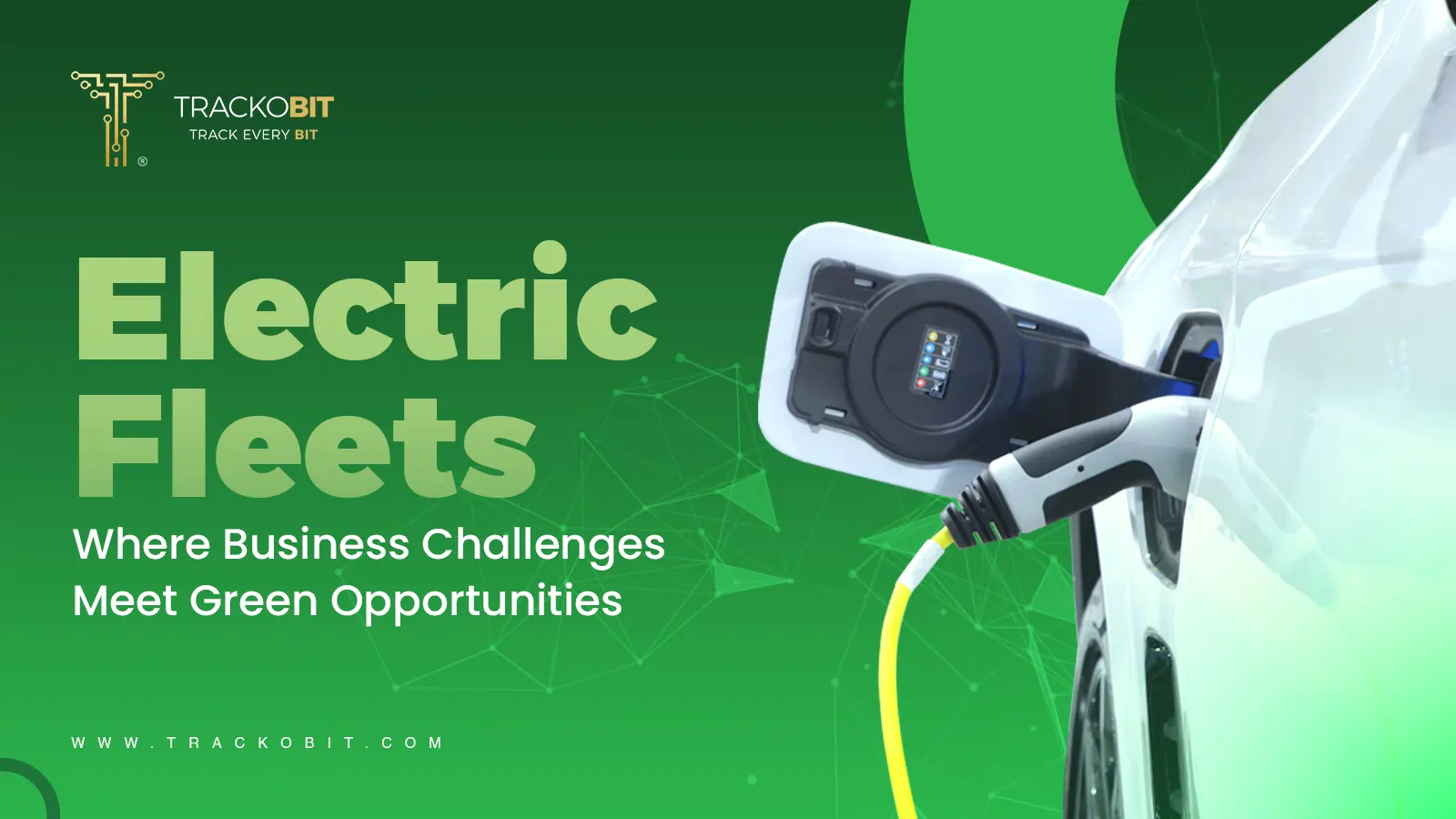-
TrackoBit
Manage commercial vehicles with the new-age Fleet Management Software
TrackoBit -
TrackoField
Streamline your scattered workforce with Field Force Management Software
TrackoField -
Features Resources
-
Blog
Carefully curated articles to update you on industrial trends. -
White Paper
Insightful papers and analysis on essential subject matters. -
Glossary
Explore an alphabetical list of relevant industry terms. -
What’s New
Get TrackoBit & TrackoField monthly updates here. -
Case Study
Explore the cases we solved with our diverse solutions. -
Comparisons
Compare platforms, features, and pricing to find your best fit.
-
About Us
Get to know TrackoBit: our team, ethos, values, and vision. -
Careers
Join the most dynamic cult of coders, creatives and changemakers. -
Tech Support
Learn about our technical support team and services in detail. -
Events
Check out the exhibitions where we left our marks and conquered. -
Contact Us
Connect with us and let us know how we can be of service.
How Are EV Fleet Management Software Tackling Key Barriers to EV Adoption?
- Author:Ayushi Nagalia
- Read Time:7 min
- Published:
- Last Update: February 4, 2025
Table of Contents
Toggle
The future of commercial fleets is green and using EV fleet management software is the way to step into the future now! Get solutions to all significant EV adoption challenges at ease.
Table of Contents
Toggle
Imagine – in a world of digital transformation, you still manage all your accounts manually. Seems counter effective, right? You’ll be lagging behind your competition for no reason, right?
If you are in the fleet or trucking business, that is exactly the case with electric vehicles. Commercial fleets are slowly but steadily shifting towards a green operational future, and if you don’t start now, your competition will.
By 2030, the electric vehicle market is projected to go up to $1103.17 billion.
That’s a HUGE pie, and you want to be having a big slice of it. With cheaper running costs and environmental-friendly operations, the benefits are many.
However, there are some significant reasons why many fleet owners dither to adopt EVs into their commercial fleets. But an electric vehicle management software is a good solution. How? Let’s learn from this blog!
What Are The Primary Barriers to Adopting Electric Fleet Vehicles?
Nothing good comes into the world served on a platter. Everything worth shifting into comes with significant challenges – and adopting electric vehicle fleets is no different.
Yes, EVs have some significant benefits for commercial fleets. But for now, EVs are still at a nascent stage, especially in a country like India. So, there are some challenges to overcome. Let us look into them here.
Initial Cost of Electric Vehicle Fleets
One of the biggest barriers to EV adoption in India, especially for smaller fleets is the higher upfront costs.
Yes, even if the operational and running costs for EVs are much lower than their ICE counterparts, the initial costs are still high. After all, the 35% costs of an electric vehicle is accounted for by the battery – and even with the improved technology, battery costs for EVs are still higher than that for ICE vehicles.
This issue, however, does not seem too much in the long run when vehicles are actually on the road for a while. However, in the beginning, especially for fleets that need even more than 15 vehicles, this cost might be too much for SMEs to handle.
This issue is surely going to be solved within a couple of years when the costs of batteries get even lower, just as they have gone down by 90% in the last decade.
Low Running Time of a Single Electric Vehicle Fleet Charging
Yes, your fleet can get a more sustainable and cleaner operational value with EVs. But the runtime of electric fleet vehicles is much lower than that of gasoline-powered vehicles.
Range anxiety is real – where drivers and business owners are not sure whether the runtime of their electric vehicles on a single charge would be enough. This is especially a problem with long-haul commercial vehicles. After all, anybody would prefer 1-2 charges per trip over 4-5 charge stops, right?
Most light-duty trucks to launch by 2025 are expected to have an average run time of 400 kilometres per charge. While this is a perfect range for localised operations, a longer range is preferable for longer trips and operations.
Another problem that comes with this is that the time that it takes to completely recharge an electric vehicle is much longer than refuelling an ICE vehicle.
Inadequate Electric Vehicle Charging Infrastructure
Yes, as electric vehicles are increasing, so are charging stations. However, the rate at which charging stations are increasing is nearly not enough for a successful EV revolution.
Paired with range anxiety, this is a huge issue which boosts the hesitation linked to EV adoption.
After all, most EV fleet operators in India fear unnecessary downtime since the drivers couldn’t locate a nearby charging station.
Some major issues that pop up due to a bad charging infrastructure are:
- Higher electric vehicle downtime
- Increased wait time at the charging stations
- Higher cost of charging due to higher demand
Yes, with electric vehicles, fleet managers can happily do away with massive fuel costs. But how the tables turn when fleets end up consuming more time, eventually costing money!
Requirement For Specialized Driving Care
Another one of the barriers to AV adoption in India is the larger percentage of unskilled drivers. Either commercial drivers are not trained at all, or are trained to drive ICE vehicles to the best efficiency. But electric vehicles are slightly different. They need specialised driving care and maintenance.
It takes time to understand training pain points and methodology to help drivers get the most out of electric fleet vehicles.

How Do EV Fleet Management Software Tackle Barriers To EV Adoption in India
Enough with the problems already!
Yes, adapting electric vehicles for commercial fleets comes with significant challenges. However, there is nothing that some advanced technology cannot solve!
If you use an electric vehicle software, you will see a significant ease in the process of adopting a fleet of electric vehicles. After all, the software is designed with nifty features to make the transition and management easier for you, right?
EV and Battery Maintenance Systems
Anybody working at companies with electric vehicle fleets will know how important battery management is. The right EV fleet charging software will help your range anxiety ease up since the vehicles will:
- Consume less energy
- Run for longer distances
- Be even more cost effective
The best thing about EV and battery maintenance systems is that they allow your fleet to be much more powerful. They can check when an electric vehicle’s battery health is not up to the mark – so that you can take action at the right time.
With smart EV fleet charging software like TrackoBit, managers can keep track of:
- Healthy battery charging
- Real-time SOC data
- Live voltage status
Smart electric vehicle fleet management software also improves charging since managers and riders get a clear overview of when the vehicles are at their limit.
Specialised Route Optimisation System
EV fleet management companies offering you software solutions know how significant range anxiety is. Therefore, they offer route optimisation tools that can help managers get away with it.
A specialised route optimisation system from an electric vehicle fleet management software allows managers to set multiple waypoints. And you know what these waypoints can constitute? Charging stations!
The right EV route planning systems can account for the running range per charge and construct a route in a manner that the vehicle has a charging station to go to before it is out of juice!
Outlined Nearby Electric Vehicle Fleet Charging Hubs
When you’re working with a new tech – anything that helps in adopting it is important – regardless of how big or small the feature might seem.
That is exactly the case with a powerful feature EV fleet management software like TrackoBit offer.
Through their exceptional mapping solutions, they are able to track your vehicle online and show you the closest charging stations on the way. Of course, the optimised route will already have some stations lines on the way, but in case of emergencies, this feature can help massively.
Green Driver Behavior Monitoring
Yes, driver behaviour monitoring in itself is a crucial feature that allows fleets to be safer and more efficient. However, in the case of electric vehicle fleets, you need to make sure that the drivers are not only following safer driving practices, but also EV safe practices.
With an EV fleet management software, managers can see how much battery each driver is consuming. Good Ev driving behaviour makes a huge and direct impact on battery health and run time. So, better use an EV fleet management software to reduce most range anxiety issues!
For further safety issues, these software also come with features such as battery disconnect alarm and parking modes – keeping everyone in the fleet in the loop. When the future of vehicles can offer so much data transfer and transparency, why not leverage it?
Insightful and Analytical Reports
Taking action is important – but so is taking that action in the right direction! The top EV fleet management companies know that no scaling of EV adoption and fleet enhancements will do anything if the adoption is not done the right way.
With insightful reports and analytical nuggets offered by fleet management software, you can see how well each battery is performing. Also, since the data is so well explained throughout the software, you can also make a sure-hot simpler strategy to improve your fleet functions.
Summing Up
Once you start using an EV fleet, you will see multiple benefits such as reduced operational costs, minimised carbon footprint, and improved goodwill. So, isn’t it only logical to use EV fleet management software to simplify the EV fleet adoption process for your business?
If you want to be at par with the growing tech and bring in some early juicy nuggets for your business, try TrackoBit. With a smart battery management system and comprehensive fleet solutions, you’ll see your operations and profits skyrocket with us quickly!
Ayushi Nagalia is a Senior Content Specialist at TrackoBit. She is a marketing maverick with a lush background in literature. With years of experience crafting content for various niches, she speciali... Read More
Related Blogs
-

Plug, Pair, Perform TrackoBit Introduces BLE Sensor Integration
Tithi Agarwal November 26, 2025TrackoBit’s BLE Sensor Integration enables wireless, real-time monitoring with faster installs and accurate insights. It improves fleet efficiency, visibility, and…
-

How to Use Driver Behavior Reports as a Sales Hook to Close Big Fleets
Tithi Agarwal October 16, 2025TrackoBit’s driver behavior reports empower fleet providers to win big contracts by showcasing safety, efficiency, and measurable ROI.
-

TrackoBit’s Unlocking in Geofence with OTP: Elevating Cargo Protection
Tithi Agarwal September 16, 2025TrackoBit’s latest feature – Unlocking in Geofence with OTP lets you lock out theft and unlock cargo only at the…
-

The Rise of Electric Fleets: Challenges and Opportunities for Businesses
Tithi Agarwal September 4, 2025The global fleet landscape is poised for a decade-long transformation. This change is being powered by electricity. Logistics-led businesses are…

Subscribe for weekly tips to optimize your fleet’s potential!
Your inbox awaits a welcome email. Stay tuned for the latest blog updates & expert insights.
"While you're here, dive into some more reads or grab quick bites from our social platforms!"Stay Updated on tech, telematics and mobility. Don't miss out on the latest in the industry.
We use cookies to enhance and personalize your browsing experience. By continuing to use our website, you agree to our Privacy Policy.

































